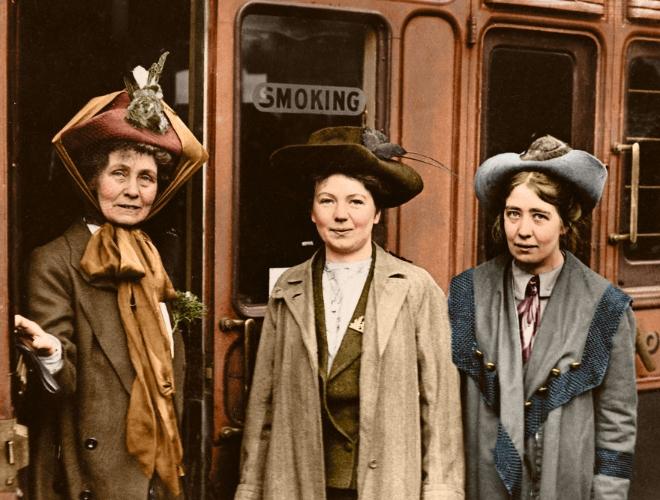These old colorized photos show the suffragettes' commitment to women's rights
2018 marked the centenary of Britain's Representation of the People Act 1918, which granted women over the age of 30 the right to vote. As a photo colorist and history lover, Tom Marshall wanted to mark this anniversary by bringing to life the photos of these women who helped break down social divisions.
Credit: Tom Marshall / PhotograFix
The artist, who defines himself as a feminist, is still surprised that in our time, equality between men and women is still not complete. However, we must still recognize that things are going in the right direction and that a long way has been covered in the last 100 years. By coloring these photos from the beginning of the 20th century, Tom Marshall wanted to show how much women had to fight to get where they are today.
As a reminder, the women began by organizing public meetings, seeking newspaper coverage, and publishing pamphlets and magazines to spread their message.
By the 1900s, their movement had already gathered thousands of members across Britain. Millicent Fawcett, president of the National Union of Women's Suffrage Societies, has focused much of her energy on improving women's higher education opportunities. In 1875 she co-founded Newnham College, Cambridge, one of the first colleges in Cambridge to admit women.
At the same time, she aimed to secure women's suffrage through peaceful and legal means, including introducing bills in Parliament and holding meetings to explain and promote the society's goals. But other members believed in a more militant approach to the campaign.

That is why, in 1903, Emmeline Pankhurst separated from the NUWSS and founded the Women's Social and Political Union (WSPU), later known as the Suffragettes. Their motto was clear: “deeds, not words”.
The suffragettes are arguably best remembered today because their aim was essentially to grab the headlines and garner as much public attention and support for their cause as possible.
The suffragettes, historic women
100 years ago, men considered themselves the superior sex and many feared that if women won the right to vote, they would stop marrying, d have children and the British race would disappear.
This reasoning seems completely crazy today as the place of women in society has evolved, but it was the reality. From the middle of the 19th century, women began to fight for their cause. Trailblazers such as Millicent Fawcett started the conversation, but it's up to the suffragettes to make sure politicians take heed.
Suffragettes are campaigning much more militantly, smashing shop windows, chaining themselves to railings outside Parliament, setting fires and damaging property. From one woman involved in the movement to another, the levels of protest varied enormously.
Some suffragettes use hammers to smash windows, others burn churches and letterbox bombs. Their actions have not always helped their campaign, but they have managed to keep the issue of women's rights in the headlines.
Here are the colorized photos by Tom Marshall:
1. Emmeline Pankhurst and her daughters Christabel and Sylvia, at Waterloo Station, October 4, 1911
Credit: Tom Marshall / PhotograFix
2. A worker making munitions in a British factory during World War I
Credit: Tom Marshall / PhotograFix
3. Suffragette Mabel Capper was arrested in Bow Street in 1912. She wears the colors of the WSPU, with a purple, white and green medal ribbon
Credit: Tom Marshall / PhotograFix
4. A woman looks through a shattered window in Holloway Prison, after the explosion of a suffragette shelter near the prison
Credit: Tom Marshall / PhotograFix
5. Emmeline Pankhurst in 1913
Credit: Tom Marshall / PhotograFix
6. Annie Kenney and Christabel Pankhurst, founders of the Women's Social and Political Union (WSPU)
Credit: Tom Marshall / PhotograFix
7. Millicent Fawcett, a peaceful activist
Credit: Tom Marshall / PhotograFix
8. Emmeline Pankhurst is arrested outside Buckingham Palace as she attempted to present a petition to King George V in May 1914
Credit: Tom Marshall / PhotograFix








